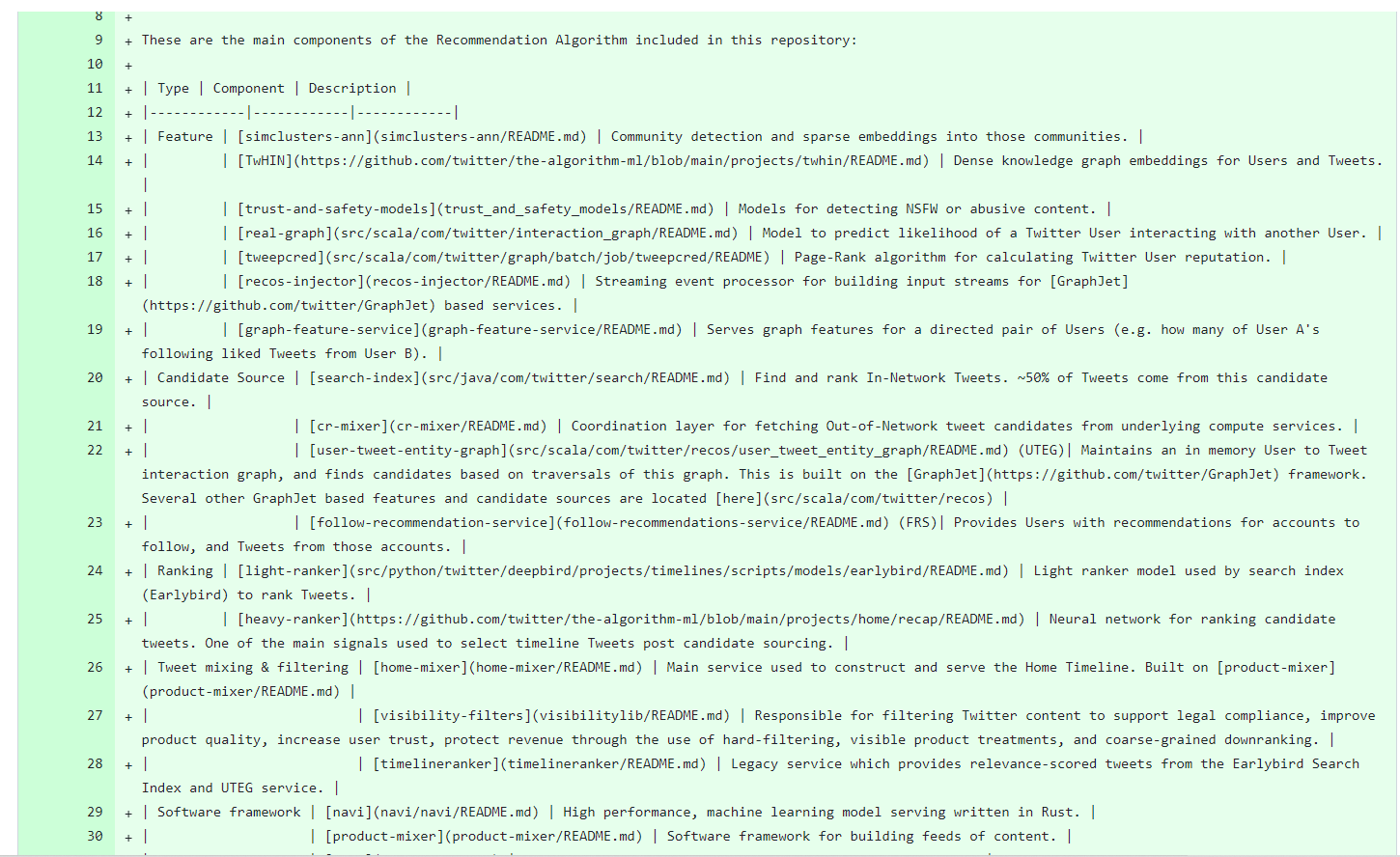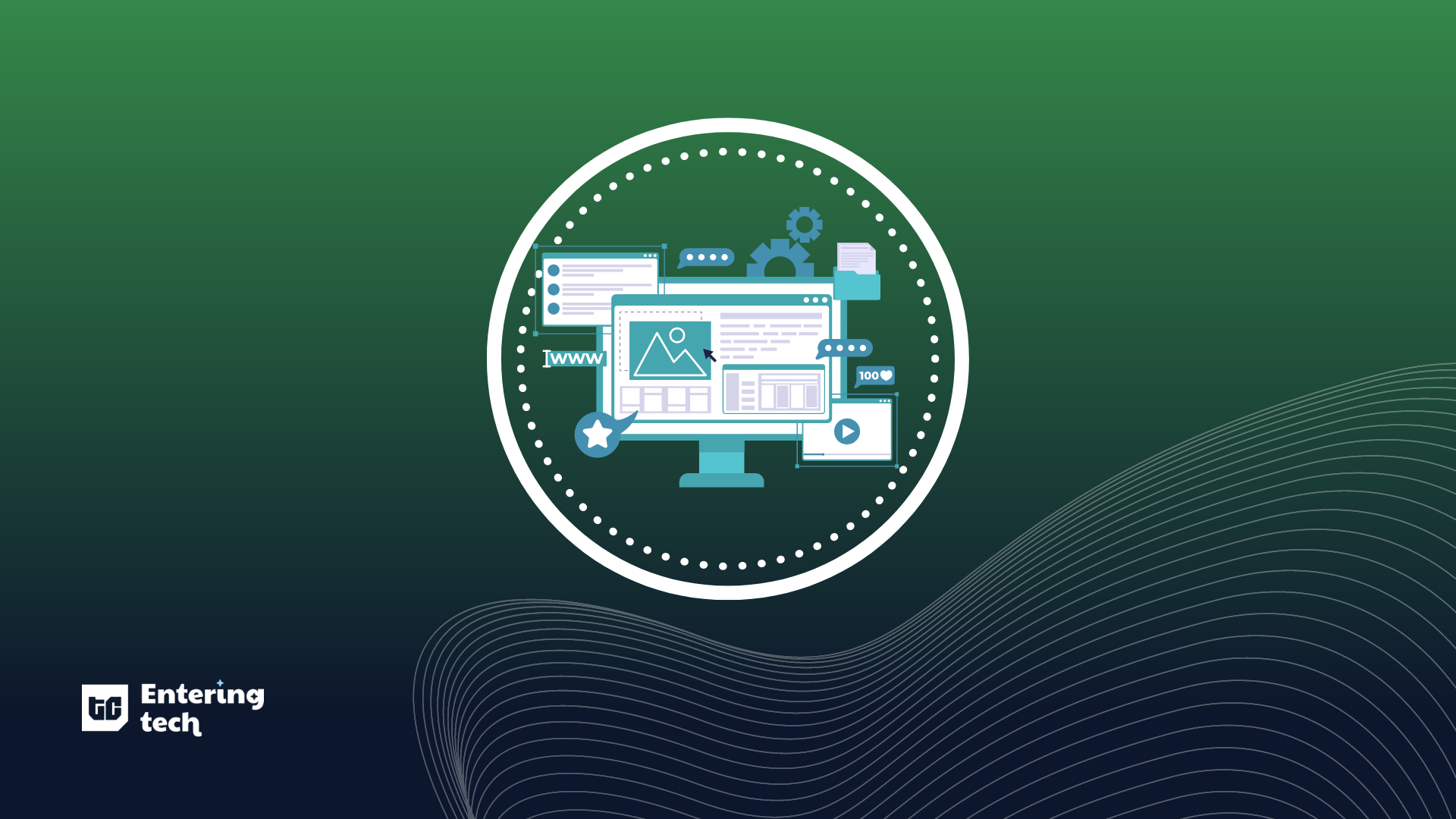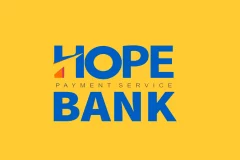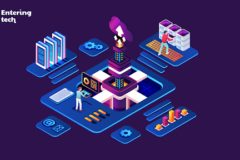
12 || 04 || 23
View in BrowserBrought to you by

#Issue 25
How to become abackend engineer
Greetings ET Readers 🖖🏾
Last edition, we took a look at frontend engineering, so it’s only right that in this edition of #EnteringTech🚀, we turn our attention to the other side of things: the backend.
Backend engineers are the builders of the apps and websites we use. They ensure that the buttons we click work, and everything works as it should. If you’re curious about how exactly your favourite apps work behind the visual, you’ll definitely enjoy this edition.
Read on to discover how exactly backend works, what languages you’ll need to learn to excel in it, and the tools you need.
Don’t forget to share #EnteringTech🚀 with your friends and network.
by Pamela Tetteh & Timi Odueso.

Tech trivia
Some trivia before we begin. Answers are at the bottom of this newsletter.
- What is the first backend programming language?

What is backend engineering?
The last edition of #EnteringTech🚀 featured frontend designers and how they make magic with HTML and CSS.
In this week’s edition, let’s talk about backend engineering and how it’s quite different from frontend.
While frontend engineers are concerned with making apps and websites usable for everyday people like me and you, backend engineers are the ones in charge of making sure everything you interact with actually works.
💡 Think about it this way. Frontend engineers make buttons you can click on, but backend engineers are the ones that ensure that the links you’re clicking on work. They ensure that when you save something on Google Drive, it goes to the right folder, or that when you search for something on WhatsApp, you find what you’re actually looking for.
Backend engineers use code to connect servers, applications, and databases that deliver information to users. Backend developers determine how things work.
💡 Here’s another quick example: backend engineers are the ones who wrote the algorithm or code that keeps bringing you videos you like on TikTok. Remember every time Instagram or Twitter crashed? It’s because something at the backend broke! Here’s an even better example: the Game of Thrones characters like Jon Snow and Danaerys Targaryen or the places like Winterfell and King’s Landing are the frontend of the show. But the writers, producers and colossal disappointments like David Benoiff and D.B Weiss who are in charge of the storytelling i.e. who dies and who goes to war are the backend. They drive direction!

How backend engineering works
Here’s what we can say: it’s not pretty and that’s because they do a lot of stuff.
Most backend engineers build the skeletal software of an app or a website and develop the application programming interface (API) of any software. Others are cloud engineers who build digital infrastructure so you can save things on the internet—or the cloud—instead of on your hard drive.
💡 Remember, all applications and websites are in code and code is the language of computers, so backend engineers write in code and tell computers what to do, like what should happen when someone clicks a button, or which function should occur when we swipe left on our phones.

Like frontend, backend has many languages for building apps and websites. The most popular are:
- C++ which was used to build the Microsoft Office Suite.
- Java which was used to build Spotify and Twitter.
- Python used in Instagram, Dropbox and Pinterest.
- PHP used in Facebook, Wikipedia and WordPress.
- Ruby on Rails which was used in Spotify, and
- GoLang, notably used on Google and Uber.
There are hundreds of other backend languages and new ones are being developed every day. To become a backend engineer, you’ll have to start by learning one language and working your way up to as many languages as you want.
Each language has its own advantages and disadvantages. For example, many engineers say Java and C++ are verbose and complex, even though they are widely used, and as such it’s easy to find solutions to any problem. PHP, on the other hand, is relatively easy to learn but it has security issues and performs poorly.
Most developers know three languages and stop there so they can master the three. You don’t have to learn many languages to be a backend engineer. Omeiza Owuda, software engineering manager at Big Cabal Media, says that it’s mastering the languages—or quality—that matters, not quantity.

Tools of a backend engineer
👨🏾💻 Hardware
To learn backend engineering, you’ll need a laptop. Here are the minimum requirements we found online:
- a Core i3 or i5 processor
- 8 GB RAM
- 256 GB SSD; and
- Screen resolution of 1366 X 768 pixels.
Remember, you don’t need a MacBook Pro or triple monitor screens just yet.
🖥️ Software
The basic tool for backend development is a good code editor and there are many code editors out there.
There’s Visual Code Studio and Chrome Developer Tools which are some of the most popular.
The more you learn about backend languages, the more you’ll discover which tools are critical and which are just aesthetics—like Nigeria’s claim to the “giant of Africa” title.
My Startup in 60 Seconds

In this episode of My Startup in 60 Seconds, Gugulethu Siso talks about her startup Thumeza and how it’s solving a $168-billion-dollar problem in the logistics sector.

You can learn backend too
If you’re interested in becoming a backend engineer, here are courses you can take.
- Price: Free ($95 for certification)
- Duration: Varies
- Tools Needed: Internet + laptop
- Level: Beginner
- Price: Free
- Duration: Varies
- Tools Needed: Internet + laptop
- Level: Beginner
- Price: $290
- Duration: 9 months
- Tools Needed: Internet + laptop
- Level: Beginner
*Presently closed to applications
- Price: $1,740
- Duration: 23 weeks
- Tools Needed: Internet + laptop
- Level: Beginner
- Price: Free
- Duration: Varies
- Tools Needed: Internet + laptop
- Level: Beginner
- Price: Free (Pay for certificate)
- Duration: 33 hours
- Tools Needed: Internet + laptop
- Level: Beginner

Ask a techie
Q. How can I get my unpaid salary after 2 months of contract termination from my employer?
First off, I’m sorry this is even happening. We’d suggest legal action. If you signed a contract where the company signed to pay you in the event of severance, then that contract—even verbal—is binding. This isn’t in any way legal advice so I’d advise you to consult a lawyer. Hope you get your dues as swiftly and efficiently as possible. 💜
Q. As an event planner who has also taken management job roles and looking to break into tech, what tech roles would you suggest as in-line with my career path?
Check out project management and sales roles. Tech roles don’t necessarily have to be coding or design, you can still use skills you’ve built in event planning and management to work in operational, sales and project teams for tech companies. For example, tech companies like Paystack and Jumia have teams of sales associates who sell products and services. That’s what I’d suggest. You should also check out the old episodes of #EnteringTech🚀, you might find something else you’ll love.
Q. Can a phone be used in learning social media marketing, or getting certified in social media strategy?
Yes, definitely. For social media management, you’ll do a lot of work on your phone. We’d recommend a laptop as soon as you can afford it, but if you’re just starting out, a phone with good RAM and storage space can serve you in learning social media marketing. The major things you’ll do are writing, designing and analytics, and those can be carried out on phones.
That’s all we can take this week. Have any questions about working in tech? Ask away and we’ll find answers for you.👇🏾

Tech trivia answer

Opportunities
- The Jasiri Talent Investor Programme is looking for highly-driven individuals with a history of achievement and/or entrepreneurial action who aspire to launch a high-growth venture. Apply by April 23.
- The SaaS Accelerator Program: Africa 2023 has opened applications for its accelerator programme to enable early startups in Africa to receive funding. Selected startups will receive up to $70,000 in funding. Apply by September 7.
- ALX Africa is calling for young African learners who are interested in data analytics, data science, cloud computing, and salesforce administration to apply to its new world-class programmes at no cost to them. Apply to any ALX course here.

Jobs
- TechCabal – Senior Reporter, Reporter – Africa
- Big Cabal Media – Senior Software Engineer, Senior Product Manager, Sales Associate, Senior Sales Manager – Lagos, Nigeria (Hybrid)
- Lemonade Finance – Social Media Associate, Customer Support Representative, Product Designer, Senior Backend Engineer – Africa (Remote)
- Kuda Bank – iOS Engineer, Backend Engineer, Android Engineer, Lead Product Manager, Copywriter, UX Writer, – Nigeria
- Andela – Backend Engineer, Procurement Manager, Nigeria, Procurement Manager, Kenya – Remote
- Moniepoint – Frontend Engineer (Angular), Frontend Engineer (React), Senior Frontend Engineer (Angular), Senior Frontend Engineer (React), Technical Product Manager, Technical Product Specialist – Various Locations
Disclaimer: TechCabal is not affiliated with or associated with jobs and opportunities listed on all its job boards and newsletters. All applicants bear the responsibility of researching about the roles and companies they apply to.

No longer want to receive these emails? Unsubscribe here




























